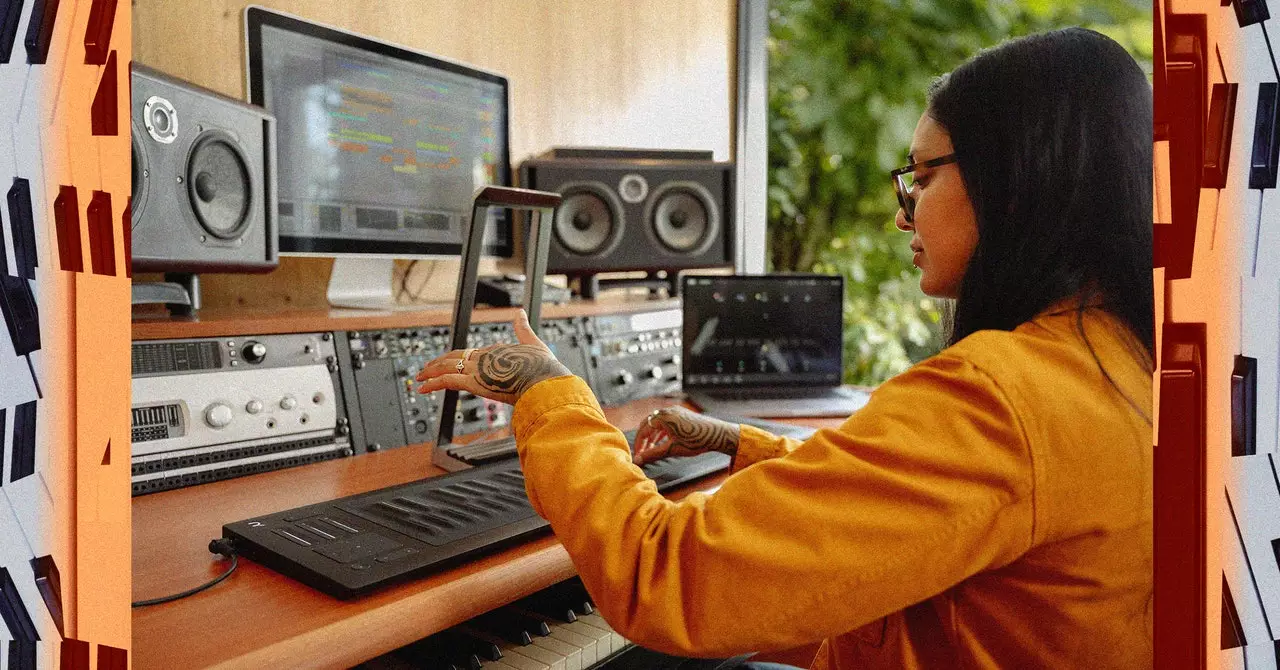As the landscape of music education continues to evolve, a new player has entered the arena with a promise of enhancing the learning experience: Roli’s Airwave. With technological advancements reshaping how we interact with musical instruments, the Airwave is poised to bridge the gap between conventional teaching and modern technological efficiency. Roli, a company renowned for its innovative musical devices, has set its sights on revamping piano lessons through user-friendly AI integration, ultimately reshaping how aspiring musicians engage with their craft.
The primary motivation behind Roli’s Airwave arises from the struggles many learners face in conventional music education. According to Roli’s CEO, Lamb, many students experience stagnation in their progress due to ineffective traditional methods. The common experience of “hitting a wall” elicited a pressing need for more dynamic learning tools that maintain student engagement while facilitating actual growth. In a world where information is immediate and readily available, the question arises: why should music lessons abide by age-old practices? By integrating technology, Airwave aims to provide real-time engagement where students can directly interact with their learning materials, thus accelerating their progress.
Significantly, Airwave encapsulates the virtues of artificial intelligence, embedding advanced Computer Vision and Open AI’s ChatGPT technology into the learning interface. This allows users to converse using voice commands, fostering a more relatable and engaging learning environment. Whether it’s calling up a favorite song or inquiring about music theory nuances—like the distinction between scales and chords—students can benefit from instantaneous responses. While the accuracy of AI responses may pose limitations when compared to human instructors, the convenience and immediacy of these answers provide crucial support for learners keen on self-guided education.
To illustrate this point: a student can quickly request the notes in a C minor chord, and without delay, the app presents the information visually. While a live instructor might offer a more tailored approach—including musical demonstrations—this AI-enhanced tool allows for a more flexible learning schedule, accommodating students who cannot consistently sync with a teacher’s timetable.
Even as advancements like Airwave enhance self-directed learning, it’s essential to recognize the irreplaceable value of human instruction. Traditional music instructors can offer nuanced feedback on posture, hand positioning, and technique—areas where AI may falter. Despite the insight an instructor brings, their services often come with logistical challenges and financial hurdles that can deter sustained learning. Lamb acknowledges this reality and aims for Airwave to complement traditional education, thereby filling gaps in the student’s journey.
By facilitating practice when it’s convenient for the student, this device isn’t merely an alternative but rather an enhancement to the music education framework. Students can rehearse their pieces, troubleshoot notes, and immerse themselves in learning without the constraints of a formal lesson. This innovative approach to assimilation presents a potentially accelerated learning curve, where users can practice inefficiently and refine their skills more effectively.
Beyond its educational utility, Airwave also caters to more seasoned musicians engaged in music production. Lamb demonstrates the Airwave’s capabilities through motion tracking technology reminiscent of the theremin—an instrument lauded for its unique playing method. The device uniquely reacts to finger movements, allowing for manipulation of sound parameters like pitch and filtering through bodily gestures.
This function not only turns the Airwave into a learning instrument but positions it as a valuable tool for creative expression in music production. Musicians can explore diverse audio landscapes by merely adjusting their hand movements—an exciting prospect for those looking to innovate within their sound.
The Airwave symbolizes a promising fusion between traditional music education and cutting-edge technology. By addressing the inefficiencies of time-honored methods while incorporating impressive AI functionalities, Roli is setting the stage for a more fluid understanding of music. Students, equipped with innovative tools, can continue to cultivate their passion while navigating the challenges of modern-day music learning. Whether for the novice or the experienced musician, the Airwave might just redefine how we perceive the journey of mastering music.


Leave a Reply
You must be logged in to post a comment.